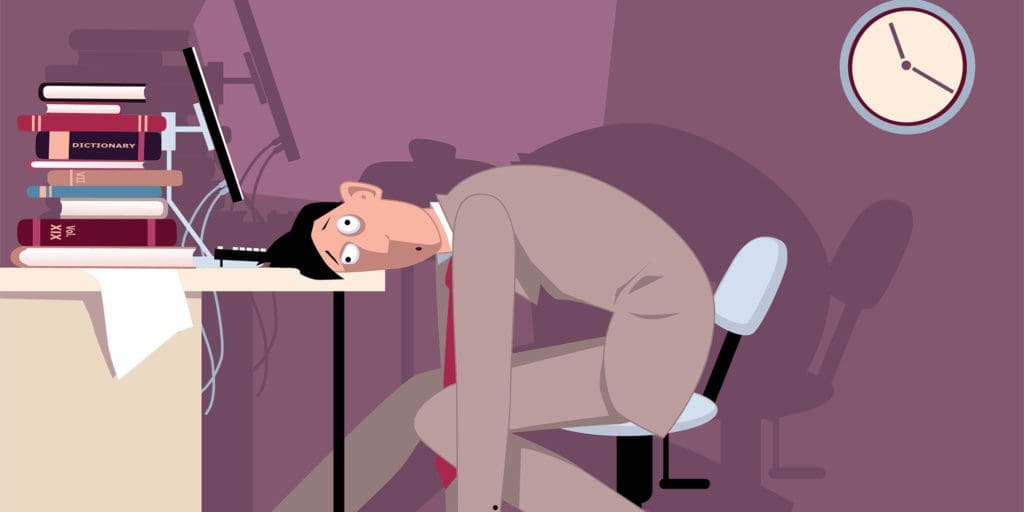When you have pain, the hurt can seem to have a mind of its own. It may come and go at will. It takes a toll on your mood and energy level. It can even affect how you go about your usual activities. You may think you’re doing all you can to keep pain under control, but sometimes even the most conscientious among us can unintentionally undermine their efforts to feel better. Do you think “How am I Making My Pain Worse”?
Sometimes it’s the little things we do or don’t do that sabotage our best efforts to avoid pain.
Medications can help manage pain symptoms, but there’s more to feeling better than just taking prescription pills. Lifestyle and attitude changes are also keys to experiencing success. In this article, we’re going to look at seven ways you might be unwittingly making your pain worse, and how to correct these common errors, with sound advice from leading pain experts and people living with pain.
1) Being a Couch Potato Is Making Pain Worse
 When you feel bad, working out will likely be the last thing you feel like doing. When people are in chronic pain, they’re often unwilling to exercise out of fear of making the pain worse. However, the opposite is actually true. Being sedentary leads to stiff muscles and joints, causing the muscles and tendons to shorten, all of which can lead to secondary sources of pain. Plus, being inactive makes it more likely you’ll put on weight, which can worsen pain in weight-bearing joints, such as your hips, knees, ankles and feet, and can also cause pain in your neck and back.
When you feel bad, working out will likely be the last thing you feel like doing. When people are in chronic pain, they’re often unwilling to exercise out of fear of making the pain worse. However, the opposite is actually true. Being sedentary leads to stiff muscles and joints, causing the muscles and tendons to shorten, all of which can lead to secondary sources of pain. Plus, being inactive makes it more likely you’ll put on weight, which can worsen pain in weight-bearing joints, such as your hips, knees, ankles and feet, and can also cause pain in your neck and back.
- Pain Resource Tip: Do some type of regular physical activity. Whether it’s walking the dog, dancing, riding a bike, or even just walking in place, do something that gets your blood flowing. Pick something that you enjoy doing so you’re more likely to stick with it. If you have arthritis in your joints, for example, swimming or aqua aerobics might be a great choice for you because the water’s natural buoyancy reduces impact and helps cushion the joints. Whatever you choose, start at a comfortable pace, take breaks as needed, and gradually increase the duration and intensity of your workouts.
“Anger is the emotion that sets boundaries,”
2) Burying Your Anger Makes Pain Worse
Chronic musculoskeletal pain especially lower back and neck pain is often related to repressed anger, according to Jeffrey Gross, M.D., a clinical associate professor of rehabilitation medicine at New York University School of Medicine. “I see it again and again in my practice, more commonly with women,” said Dr. Gross.
What’s more, a recent study at the Rosalind Franklin University of Medicine and Science in North Chicago found that when people with chronic pain were told to actively suppress their anger during a frustrating task, their feelings became aggravated and pain more severe.
If anyone can attest to this, it’s Martha Beck, 46, life coach and best-selling author of Steering By Starlight: Find Your Right Life, No Matter What! Beck, who lives in Phoenix, Ariz., has fibromyalgia. “Anger is the emotion that sets boundaries,” she said. “And if I do not set boundaries with my behavior, my body may do it for me. The single worst thing I can do to bring on my pain is to say yes to something when I want to say no, when someone puts pressure on me.”
- Pain Resource Tip: Dr. Gross suggests putting pen to paper and writing down brief statements about what makes you angry in your life. The idea is to bring anger to your consciousness, not necessarily to act on it. “I’ve seen patients get better from doing this, it’s unbelievable,” he said.
Similarly, in a recent study at Pennsylvania State University, researchers asked people who suffer from chronic pain to either express their anger constructively in writing or write about their goals in an unemotional way. Over a nine-week period, those who wrote about their anger experienced greater improvement in pain control, depressed mood and pain severity than those in the other group. Putting pen to paper can be a constructive way to feel and release anger.
3) My Pain is Worse From Skimping on Sleep


Lack of sleep can even increase the risk of depression. “This may be in part because the same area of the brain that mediates sleep also mediates pain, anxiety and depression,” said Ronald Kulich, Ph.D., attending psychologist in the department of anesthesia and psychiatry at Massachusetts General Center for Pain Medicine. “As many as 80 percent of patients with persistent pain experience sleep disturbances, yet they are infrequently asked [by their health-care providers] about the quality of their sleep.”
- Pain Resource Tip: Simply put, don’t let good-quality sleep fall to the bottom of your to-do list. If you suspect you have a sleep disorder like sleep apnea (a condition characterized by heavy snoring and brief episodes where breathing stops during sleep) or restless legs syndrome, see a sleep specialist.
One woman, Shannah Godfrey, 46, a scientist in Independence, Missouri, knows that her migraines have multiple triggers. For example, she knows that if she gets less than six hours of sleep for two or more nights in a row, “I will definitely get a migraine,” she said. Since she began going to bed earlier and using a CPAP machine to treat her sleep apnea, her migraines have become much less frequent.
Good sleep habits are essential, too. Set a consistent bedtime and wake time so you get the seven to nine hours of shut-eye per night that most adults need. Avoid caffeine and nicotine, which are stimulants, and alcohol, which can impair sleep. Exercise at least four hours before bedtime, and create a soothing sleep environment that’s dark, quiet and comfortable.
If you’re still having trouble, ask your doctor about a sleep aid. Some can cause daytime drowsiness or impaired thinking, which can be amplified if taken with opioid drugs, setting you up for mental fogginess the next morning. So be sure to tell any doctor prescribing a sleep aid if you’re taking an opioid or an analgesic. In that case, you may need to start with a lower-than-usual dose of a sleep drug.
4) Slumping and Slouching too Much


- Pain Resource Tip: “If you have any kind of back or neck pain, it’s crucial to pay attention to ergonomic issues, how you sit, stand, walk, and bend,” said Gross. If you work at a computer, sit on your chair properly with your back and forearms supported and your feet flat on the floor. Also make sure your computer is at a height that allows your head to stay in a neutral position. And don’t forget to get up and move around every 30 minutes or sooner if you feel uncomfortable. Setting an alarm on your phone can be a great way to remind yourself to get up and move around or stretch for a few minutes. Our bodies are not meant to be in any one position for too long.
5) Thinking the Worst
It might be called chronic pain, but often the aches, tingling, weakness, or hypersensitivity wax and wane. Flare-ups are especially common if you have arthritis, back pain, fibromyalgia or neuropathic pain. One thing that can make chronic pain worse during these intense periods is to let your mind spiral out of control with negative thoughts. For example, thinking that experiencing a flare-up means that your doctor missed something serious, that increasing pain levels are causing greater damage to your joints, or that this new intensity of pain will be with you from now on, are all negative thoughts that can lead to a downward spiral.
“When you have chronic pain, you can feel like it’s the end of the world, and fear how you’re going to function and fulfill all your responsibilities,” explains Irene Tamaras, 44, who has chronic low back pain and fibromyalgia, and is CEO of Dynamic Pain Relief, located in North Bethesda, Maryland. “But if I fall into the ‘Why me?’ state, it intensifies my pain and affects how strong I feel. By accepting where I am and recognizing that a pain flare-up will pass without my having to fight it, I’ve been able to shift to a positive, strong mental state,” she said.
Tamaras isn’t alone. “Besides causing distress, anxiety, and feelings of hopelessness, the tendency to catastrophize about pain, actually boosts muscle tension and may increase pain by increasing inflammatory substances in the body,” said Dr. Kulich. Pain is processed at the brain level, and there’s a wealth of research that suggests it can be influenced by your thoughts.
- Pain Resource Tip: First, accept that chronic pain often varies in intensity over time, and the ups and downs are a natural part of living with chronic pain. Second, focus on what you can actively do to relieve pain flare-ups. For example, reviewing your medications with your doctor, practicing yoga or mindful breathing and exercising are all things that you can control.
“People who engage in active ways of coping where you have the control show four times the improvement in pain and functionality as those who rely on passive therapies like massage where someone else has the control,” said Dr. Kulich. If you have trouble taking these steps on your own, consider seeing a psychologist who specializes in cognitive-behavioral therapy (CBT), which focuses on changing your thoughts and behaviors (in this case, changing how you experience pain).
6) Not Talking with Your Doctor About Your Pain Meds


“Dosage and the response to treatment have to be monitored after the prescription is written,” stresses Russell Portenoy, M.D., chairman of the department of pain medicine and palliative care at Beth Israel Medical Center, in New York City. “Even if the treatment seems to be helping, reassessment over time is needed to make sure that it continues to help. Sometimes patients take a medication month after month, without being certain that it continues to be useful.” If this sounds like you, tell your physician. Most pain medications, including analgesics, antidepressants, and anticonvulsants have significant failure rates, meaning they don’t sufficiently help the hurt.
Additionally, people with chronic pain can develop treatment-resistant pain (what’s called hyperalgesia) as a result of continuously using opioid medications, such as morphine and hydrocodone. “It’s not an addiction problem,” Dr. Kulich said. “Rather, with long-term opioid treatment, you can develop tolerance to the drug and/or an increased sensitivity to pain, which means you need more of the drug to get the same relief you used to.”
- Pain Resource Tip: “Pay attention to whether a pain-relieving medication is actually helping you, and stay in close contact with your doctor after starting a new drug or adjusting your dosage,” recommends Dr. Portenoy. However, if you feel that a medication isn’t working, don’t just stop taking it without telling your doctor. When you communicate well with your physician about medication matters, your he or she can likely help you find a medication that works for you. If your doctor doesn’t ask about side effects or how well your pain is being controlled, speak up.
7) Keeping a Pain Journal
Keeping a pain journal isn’t always a mistake. “But unless you’re looking for triggers for your migraines or you’re trying to fine-tune your medication dosages, keeping a pain journal can backfire,” said Dr. Gross. Why? It makes pain a central focus in your life, which can lead to more pain-related distress and a sense of helplessness. “It becomes a psychological issue as much as a physical issue,” Gross explains. “The worst thing you can do is dwell on the pain.”
- Pain Resource Tip: Ditch the pain journal, unless you’re keeping one per your doctor’s advice, and focus on what’s good in your life instead.
“One of the things that has benefited me is to keep a gratitude journal to focus on the fact that I have a husband who helps take care of me, that I have good healthcare, and so on,” said CJ Scarlet, 48, an author, life coach, and mother of three, in Clayton, North Carolina. CJ suffers from severe joint pain from lupus and scleroderma. “It helps me put things in perspective-and I think pain is all about perspective.”
How do You Make Your Pain Worse?
We want to read all about it in the comments section below!
What topics related to chronic pain would you like to see us research?
Email us at info@painresource.com with your ideas.
Are you on Facebook?
Join our online community by clicking here.




